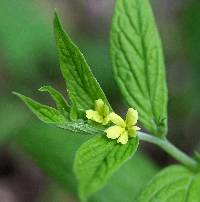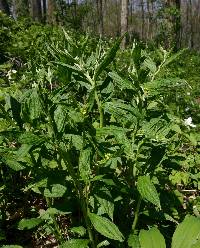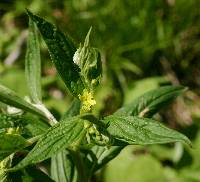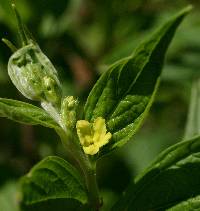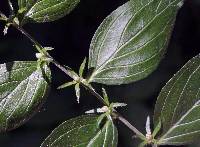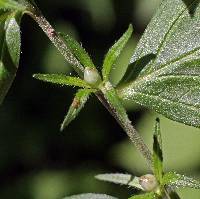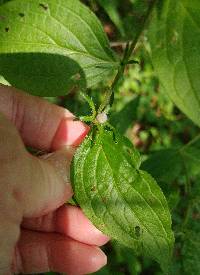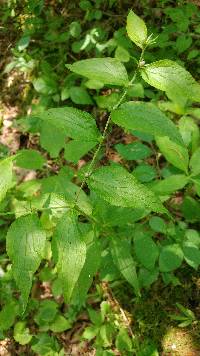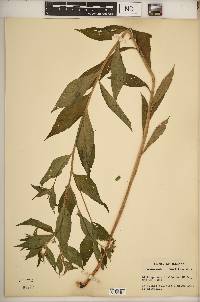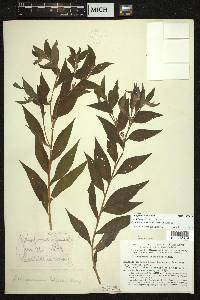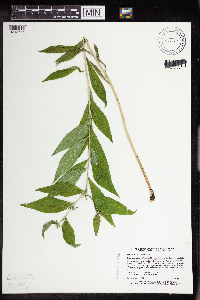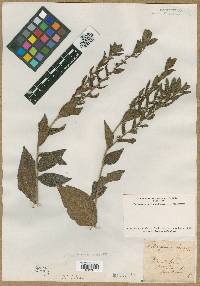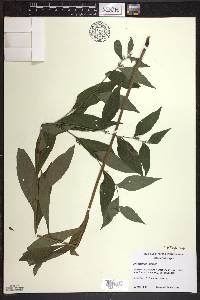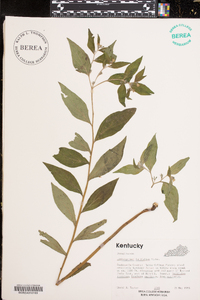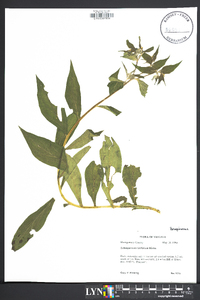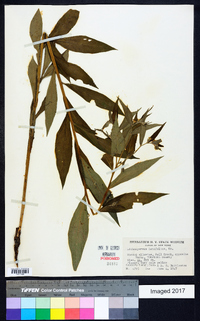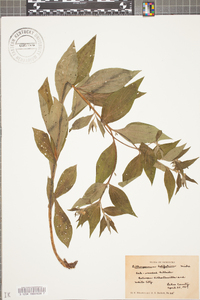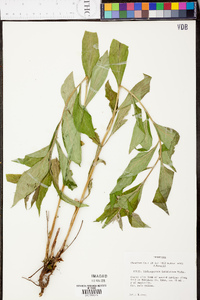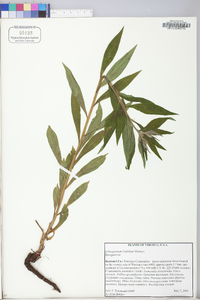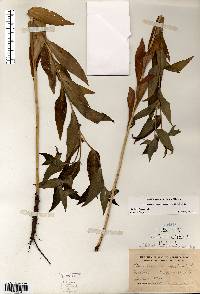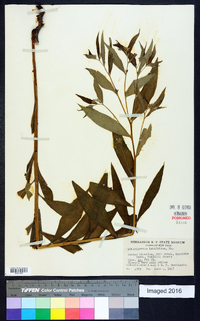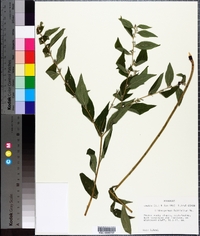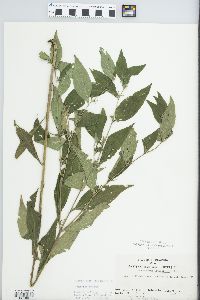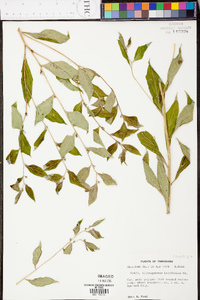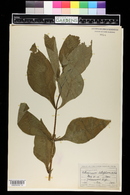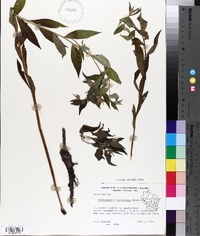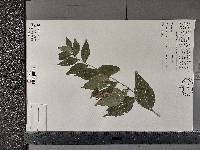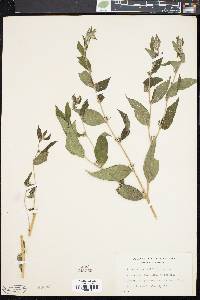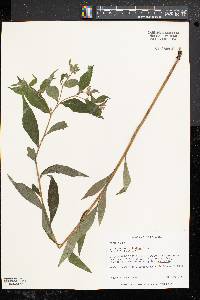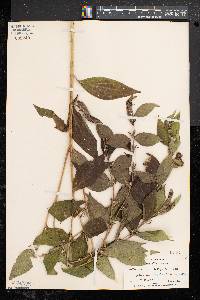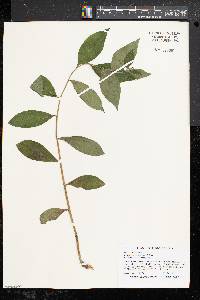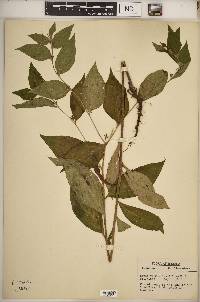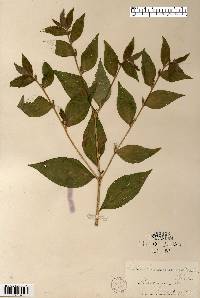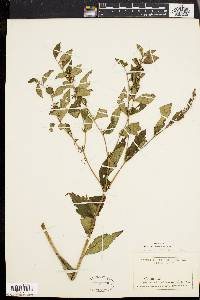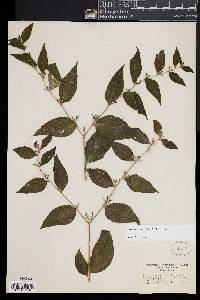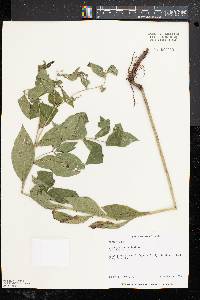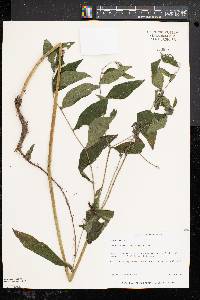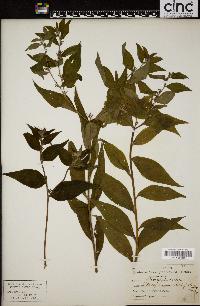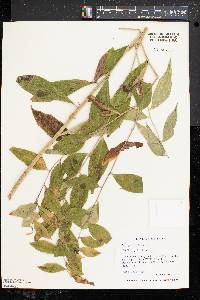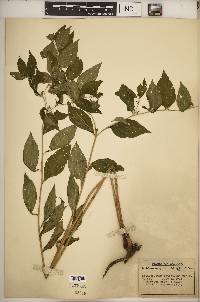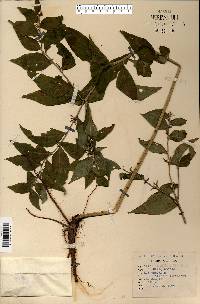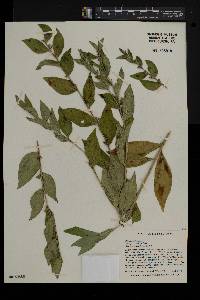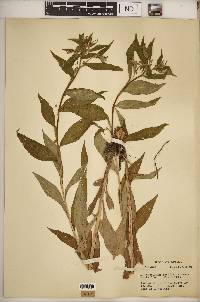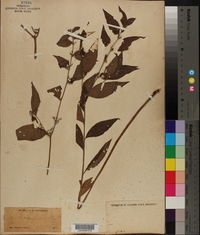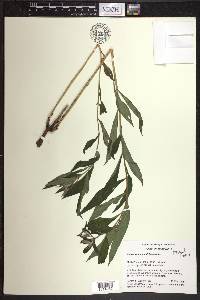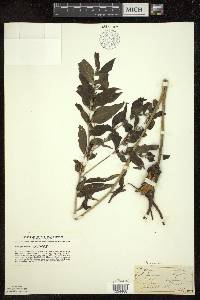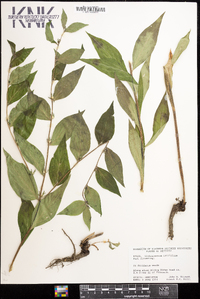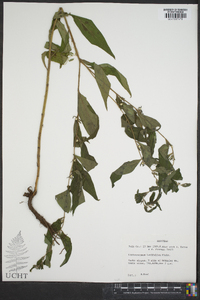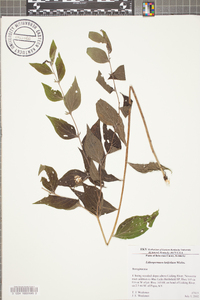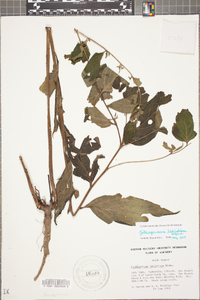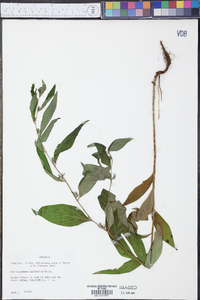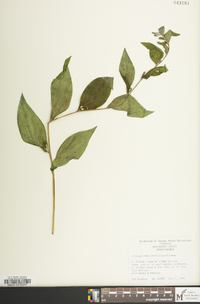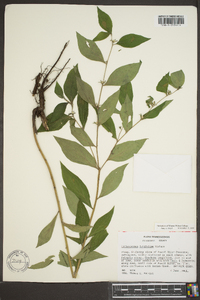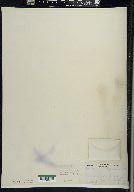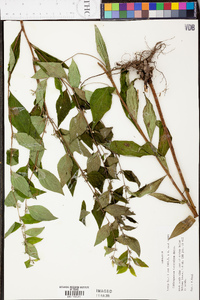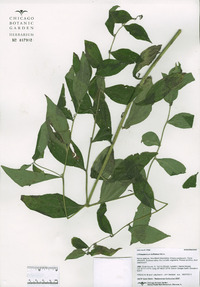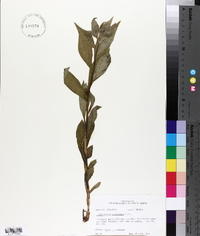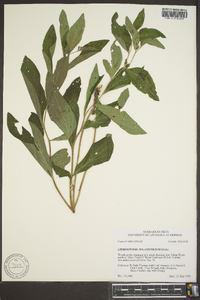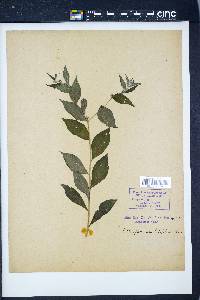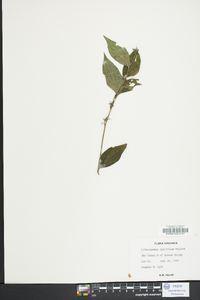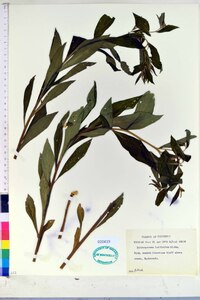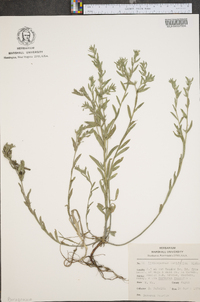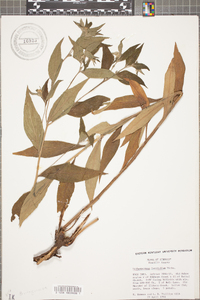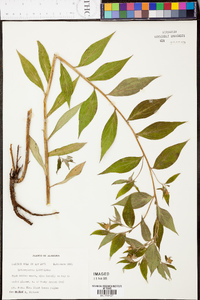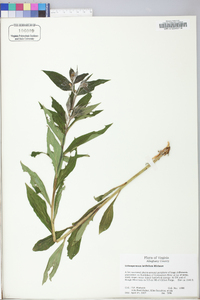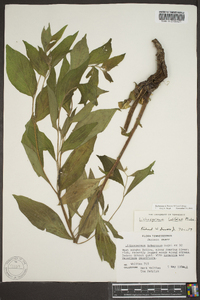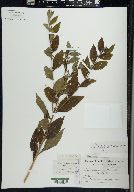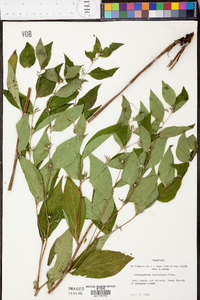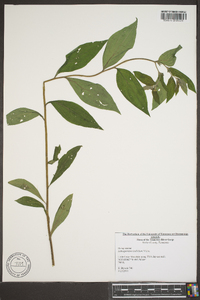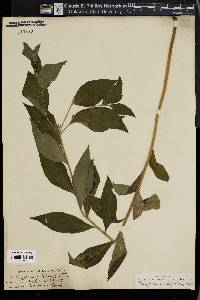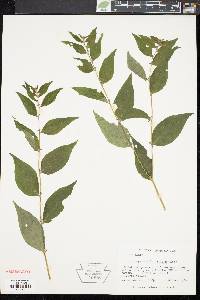
|
|
|
|
Family: Boraginaceae
American Gromwell
|
Perennial herb 40 - 90 cm tall Stem: erect, unbranched or branched above, covered with short, tightly appressed hairs. The base of the stem is very tough and woody. Leaves: normally less than twenty below inflorescence (spaced about 3 - 6 cm apart), alternate, stalkless, non-toothed, closely appressed-hairy, membranous (with two or three lateral veins evident on each side of midrib), 2 - 4 cm wide, elongated egg-shaped with long-pointed tips and somewhat abruptly narrowed bases. Flowers: several, solitary in upper leaf axils, stalkless, creamy white, small (5 - 7 mm tall, under 8 mm wide), radially symmetric, funnel-shaped with tube and short spreading lobes. Sepals: five, appressed-hairy, up to 5 - 6 mm long (nearly as long as petal tube), much longer than wide, linear with pointed tips. Petals: five, but fused for over half their length into a narrow tube, then separating into five, spreading, somewhat oval to oblong lobes. The outer surface of the petal lobes are hairy for most of their length, and at the base of petal lobe there are distinct hairy crests (fornices) which block most of the petal tube opening. Stamens: five, attached to inside of petal tube, and the oblong anthers not extending past the petal tube. Pistil: with one, deeply four-lobed, superior ovary; one, slender style; and one, distinctly two-lobed stigma. The style of each flower may be of two different lengths (heterostyly), short or long, but neither type extends past the petal tube. Fruit: a cluster of one to four, erect, shiny, white, hard, bony, lustrous, smooth or very sparsely pitted, 3 - 5 mm tall, egg-shaped nutlets with narrowed mostly blunt tips, and a flattened to slightly indented base with central rim. The nutlet clusters are enclosed by the erect, but narrow sepals. Similar species: Lithospermum latifolium is very similar to L. officinale, except that species has narrower (under 2 cm) and more numerous (over 25) stem leaves, and the surfaces are more rough with ascending hairs rather than appressed hairs. Lithospermum arvense is also similar, but that species does not have visible lateral veins on the leaves, the petal lobes are mostly hairless on their outsides, and the nutlets are drab grayish, and obviously wrinkled and bumpy or pitted. The other species of Lithospermum in the Chicago Region have showy yellow flowers arranged in terminal inflorescences, and the sepals are much shorter than the petals. A species of the southeast United States, L. tuberosum, is also quite similar, except there are basal leaves present in a rosette when the plant flowers, and the stem leaves do not reduce in size up the stem. It is possible that non-flowering plants could be confused with Hackelia virginiana, but that species has more spreading hairs throughout, rather than closely appressed hairs. Flowering: April to June Habitat and ecology: Somewhat rare, found on wooded slopes more so in the western half of the Chicago Region. Occurence in the Chicago region: native Author: The Field Museum Erect perennial, 4-8 dm, simple or branched above, the main internodes commonly 3-6 cm; lvs subsessile, lanceolate to lance-ovate, usually 2-4 cm wide, acuminate, with 2 or 3 prominent lateral veins on each side; fls solitary in the upper axils, becoming distant, ochroleucous, 5-7 mm, nearly as wide; cal-lobes nearly as long as the cor; nutlets ovoid, white, shining, 3.5-5 mm, smooth or sparsely pitted; 2n=28. Dry woods and thickets; N.Y. to Minn., s. to W.Va., Tenn., and Mo. May, June. Gleason, Henry A. & Cronquist, Arthur J. 1991. Manual of vascular plants of northeastern United States and adjacent Canada. lxxv + 910 pp. ©The New York Botanical Garden. All rights reserved. Used by permission. From Flora of Indiana (1940) by Charles C. Deam An infrequent to rare plant throughout the state. Generally on wooded slopes adjacent to streams and rarely in comparatively level woods. It has no particular tree associates, but is more often associated with the oaks. .…… Indiana Coefficient of Conservatism: C = 7 Wetland Indicator Status: N/A |
|
|
|


